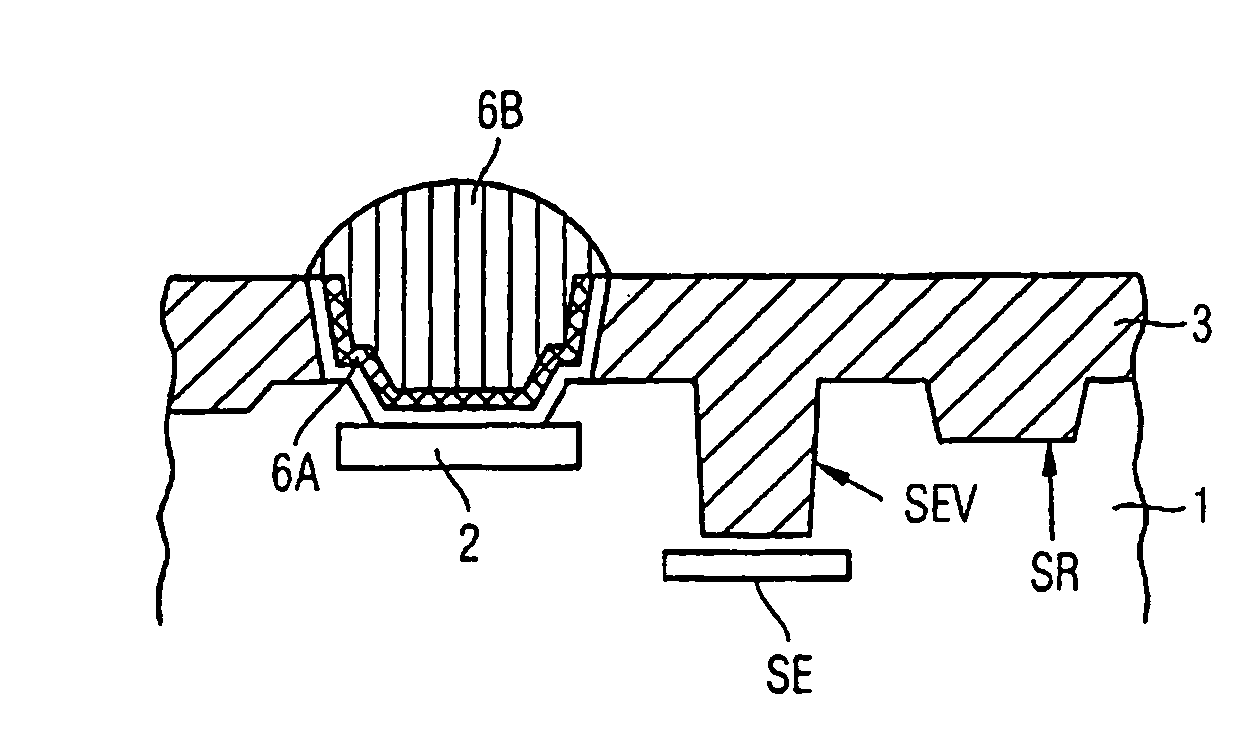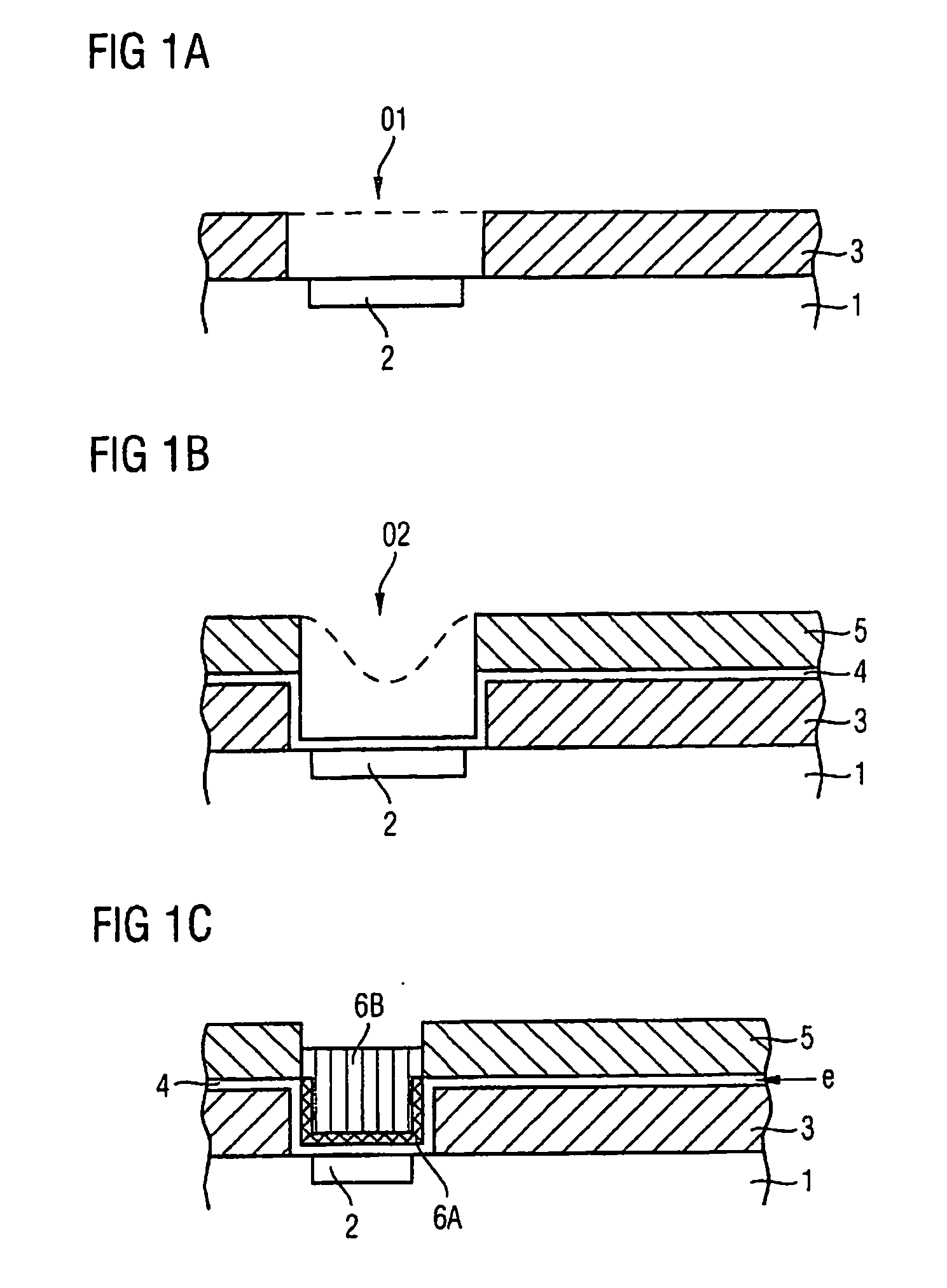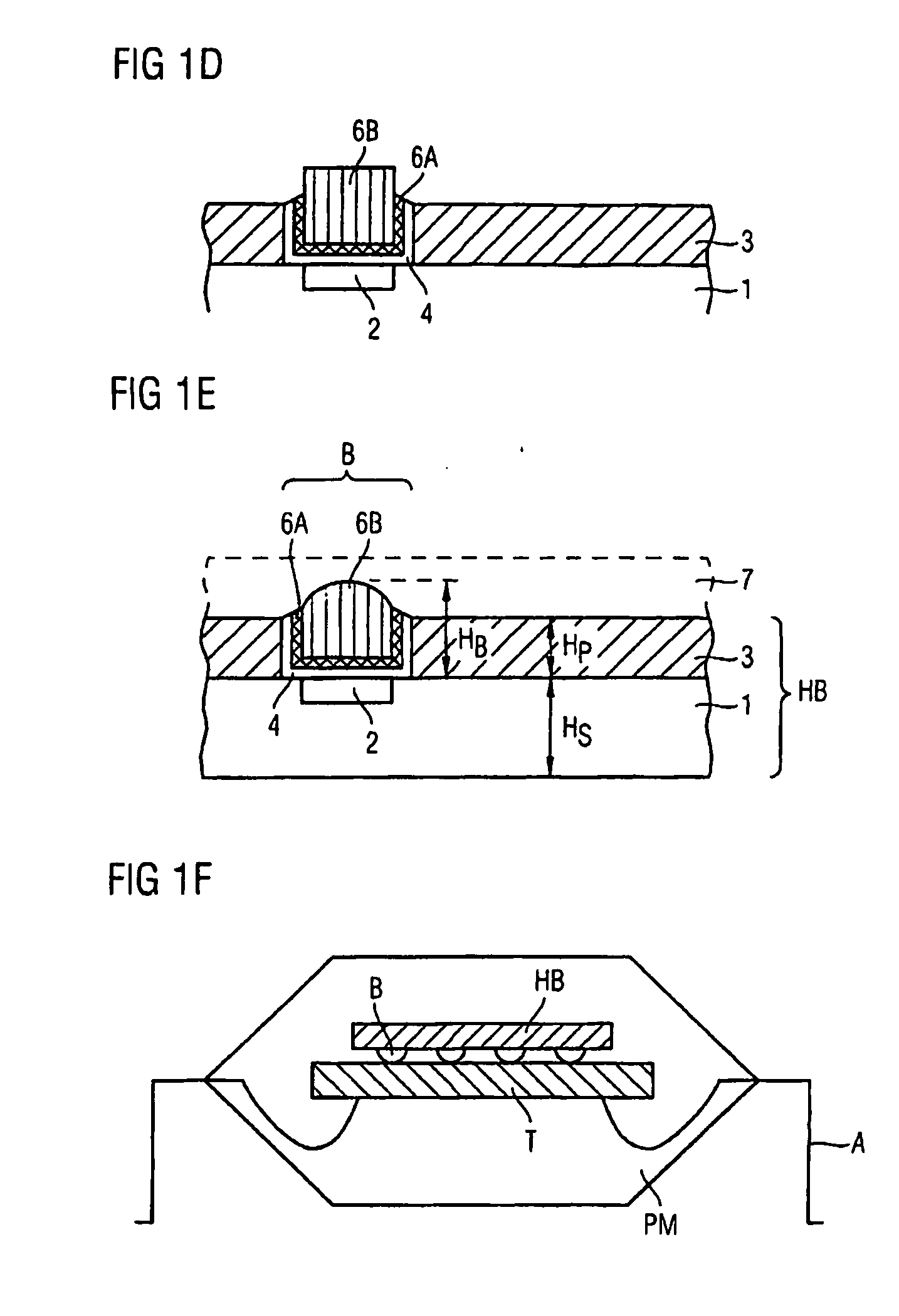Ultrathin semiconductor circuit having contact bumps and corresponding production method
a technology of contact bumps and semiconductor circuits, which is applied in the direction of semiconductor devices, semiconductor/solid-state device details, electrical apparatus, etc., can solve the problems of increased wafer breakage, low yield of above-described contact bumps, and non-uniform pressure distribution, so as to improve the mechanical stability of the semiconductor circuit or the multiplicity of semiconductor circuits. , the effect of significantly reducing the breakage of the wafer
- Summary
- Abstract
- Description
- Claims
- Application Information
AI Technical Summary
Benefits of technology
Problems solved by technology
Method used
Image
Examples
Embodiment Construction
[0018] Referring to FIG. 1A, a contact layer element 2 is formed in the surface of a semiconductor circuit 1, which represents a wiring surface. The contact layer element 2 may represent a so-called Al contact pad in a topmost metallization plane of a wiring layer region. Situated in the underlying layer planes (not illustrated) of the semiconductor circuit 1 or the wiring layer region thereof, there are further metallization planes or insulating intermediate layers, down to a semiconductor substrate in which the actual semiconductor components are realized.
[0019] Silicon is preferably used as semiconductor material. A multiplicity of semiconductor circuits being formed on a semiconductor wafer. Semiconductor wafers of this type initially have a thickness of 700 to 750 micrometers, for which reason they are sufficiently mechanically stable and can thus be handled in a simple manner.
[0020] In order to improve a mechanical stability in particular during a subsequent process of thinn...
PUM
 Login to View More
Login to View More Abstract
Description
Claims
Application Information
 Login to View More
Login to View More - R&D
- Intellectual Property
- Life Sciences
- Materials
- Tech Scout
- Unparalleled Data Quality
- Higher Quality Content
- 60% Fewer Hallucinations
Browse by: Latest US Patents, China's latest patents, Technical Efficacy Thesaurus, Application Domain, Technology Topic, Popular Technical Reports.
© 2025 PatSnap. All rights reserved.Legal|Privacy policy|Modern Slavery Act Transparency Statement|Sitemap|About US| Contact US: help@patsnap.com



